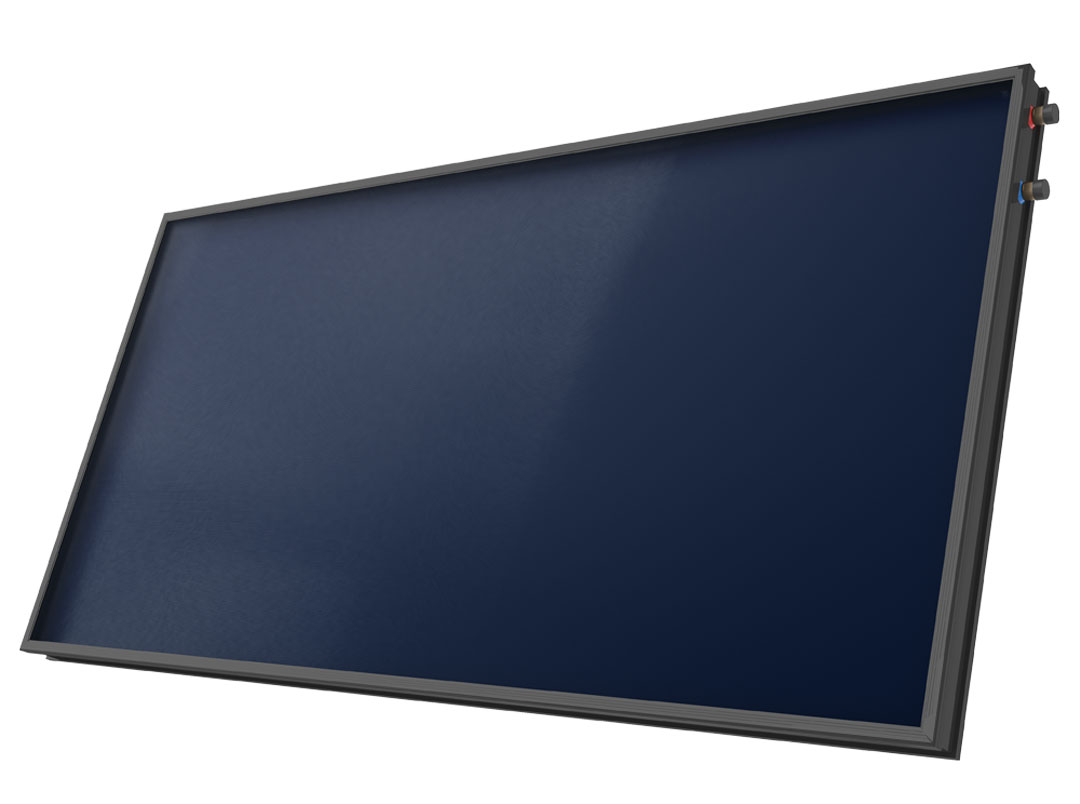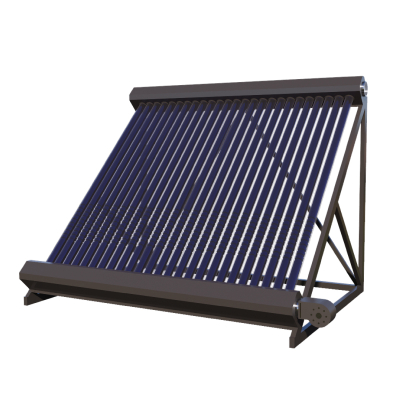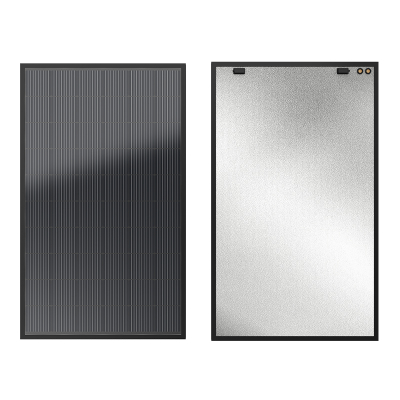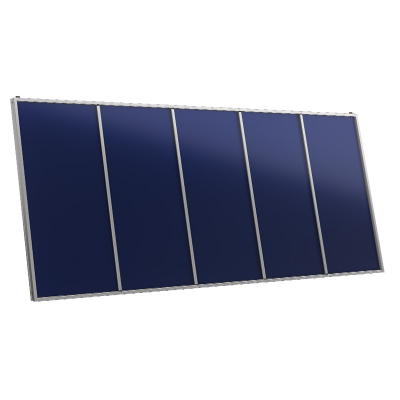Ultra-Low-Temperature Flat-Plate Collector: A Reliable Heat Source For Cold Environments
At the foot of snow-capped mountains in high-altitude areas and in frigid towns at high latitudes, low-temperature environments often pose severe challenges to the supply of hot water for daily life and production. Traditional heat-collecting equipment is prone to freezing and failure, which not only makes it difficult to meet daily needs but also increases energy consumption and operation and maintenance costs. However, the emergence of the ultra-low-temperature flat-plate collector has completely broken this predicament. Designed specifically for extreme low-temperature scenarios, it has established a firm foothold in high-altitude and high-latitude regions relying on its excellent cold resistance and efficient heat conversion capabilities. Unafraid of biting winds and freezing weather, it continuously provides warmth to users, becoming an indispensable heat guarantee equipment in daily life and commercial scenarios in cold areas.
The core advantage of the ultra-low-temperature flat-plate collector is first reflected in its superb adaptability to low-temperature environments in high-altitude and high-latitude areas. High-altitude areas (such as the Qinghai-Tibet Plateau and mountainous regions in western China) generally have an altitude of over 3,000 meters. These areas not only have low annual temperatures (with the minimum temperature often dropping below -25°C in winter) but also are accompanied by special climatic conditions such as thin air and strong ultraviolet radiation. High-latitude areas (such as the three northeastern provinces of China and Nordic countries) have long severe winters, with snow cover lasting for 4 to 6 months. Low temperatures and ice and snow jointly test the stability of heat-collecting equipment. Traditional flat-plate collectors or solar heat-collecting devices often "fail to adapt" in such environments: internal pipelines are prone to freezing and cracking due to low temperatures, the heat absorption efficiency of heat-collecting coatings drops sharply in severe cold, and equipment even "shuts down" in some cases. However, the ultra-low-temperature flat-plate collector perfectly addresses these problems through three core technological upgrades: Firstly, it uses low-temperature-resistant alloy materials to manufacture pipelines and casings, which can withstand extreme low temperatures of -35°C and avoid material brittleness and cracking caused by low temperatures. Secondly, it is equipped with an intelligent anti-freezing circulation system. When the equipment detects that the temperature is below 0°C, it will automatically start the circulation pump to allow the heat transfer medium mixed with special anti-freezing fluid to flow in the pipelines, fundamentally eliminating the risk of freezing. Thirdly, its surface is coated with an anti-snow and anti-frost coating. Even in case of snowfall, the snow can slide off quickly, and the frost layer will melt automatically under sunlight, ensuring that the heat-collecting panel is always exposed to an environment conducive to effective heat absorption. It is precisely these targeted designs that enable it to operate stably in homestays at the foot of snow-capped mountains and communities in high-latitude areas, serving as a "heat guardian" in low-temperature environments.
In addition to its strong cold resistance, efficient operation is another highlight of the ultra-low-temperature flat-plate collector and a key factor enabling it to continuously supply energy. In low-temperature environments, the heat absorption efficiency of traditional collectors often drops by more than 50%, forcing people to rely on electric auxiliary heating or gas heating, which not only increases costs but also is not environmentally friendly. In contrast, the ultra-low-temperature flat-plate collector has achieved a breakthrough of "no low efficiency in low temperatures" by optimizing the heat-collecting structure and core materials. Its heat-collecting panel adopts a high-efficiency selective absorption coating, which has an absorption rate of over 95% for solar radiation. Even in winter when sunlight is weak, it can capture solar energy to the maximum extent. At the same time, multi-layer thermal insulation cotton and a vacuum insulation layer are laid under the panel, like putting a "warm coat" on the equipment, reducing heat loss during heat transfer and ensuring that the collected heat can be efficiently transferred to the hot water storage tank. Actual test data shows that in an environment of -20°C, the daily heat collection capacity of the ultra-low-temperature flat-plate collector can reach 8.5 MJ/m², far exceeding the 5.2 MJ/m² of traditional collectors. Even in extreme low temperatures of -30°C, its thermal efficiency can still be maintained above 60%, fully meeting daily hot water needs. This high efficiency not only reduces reliance on traditional energy sources but also helps users save a large amount of electricity and gas costs, conforming to the development trend of green and low-carbon.
More importantly, the ultra-low-temperature flat-plate collector can bring sustained warmth to life in cold areas, effectively addressing users' core needs. In herders' settlements in high-altitude areas, stable hot water is required for winter heating and daily washing. In the past, people relied on coal-fired boilers, which not only polluted the environment but also required frequent coal addition, causing great inconvenience. After installing the ultra-low-temperature flat-plate collector, the water tanks in herders' homes can maintain hot water at 50-60°C every day, easily meeting the needs of vegetable washing, bathing, and heating, adding more warmth and convenience to life in severe winter. In schools in high-latitude areas, thousands of teachers and students have concentrated hot water demand. Traditional equipment often fails to supply sufficient hot water due to low temperatures, affecting the normal operation of the campus. However, when the ultra-low-temperature flat-plate collector is combined with a commercial hot water system, it can operate in parallel with multiple devices, stably supplying 15-20 tons of hot water every day. This ensures that hot water flows out of the taps in teaching buildings and dormitories at any time, creating a comfortable learning and living environment for teachers and students. In addition, in places such as nursing homes and hospitals in cold areas, continuous hot water supply is closely related to the health of the elderly and patients. With its feature of 24-hour stable energy supply, the ultra-low-temperature flat-plate collector provides reliable heat guarantee for these special groups, keeping warmth by their side at all times.
From technological breakthroughs to practical applications, the ultra-low-temperature flat-plate collector has proven its value in low-temperature environments with its strength. It not only overcomes the climatic constraints of high-altitude and high-latitude areas but also provides users with sustained heat in an efficient and environmentally friendly way, changing the situation where cold areas rely on traditional energy sources for energy supply. With the continuous development of green energy technology, the ultra-low-temperature flat-plate collector will continue to be upgraded, taking root in more extensive cold areas, bringing warmth to more people, and becoming an important bridge connecting green energy and life in low-temperature environments.





